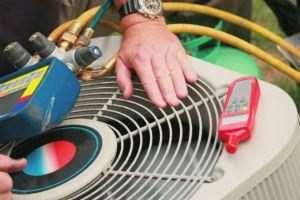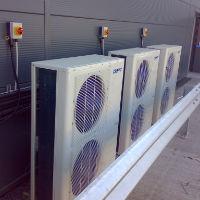 The deadline for the elimination of ozone-depleting substances in refrigeration and air conditioning systems has already been met in Latin America and, according to the preliminary balance, the proposed objectives have been achieved. It only takes developing countries to do their part before 2012, if the task is accomplished.
The deadline for the elimination of ozone-depleting substances in refrigeration and air conditioning systems has already been met in Latin America and, according to the preliminary balance, the proposed objectives have been achieved. It only takes developing countries to do their part before 2012, if the task is accomplished.
By Vanesa Restrepo
In addition to being a year of hope in terms of economic recovery, 2010 involves an evaluation of the achievements made in the implementation of standards and programs aimed at complying with the agreements agreed in the Montreal Protocol. The deadline for the total elimination of CFCs was met on the first of January of this year and that is why ACR LATINOAMÉRICA wanted to make a tour of our continent to verify the progress that each country has had in the matter.
The most important conclusion is that thanks to the measures that governments have adopted, through the restriction on imports, the inclusion of licenses and permits for wasteful obtaining, in addition to the tax burden set on these substances, the elimination of CFCs in new equipment and facilities has been achieved.
However, the "Achilles heel" remains the existing systems, as many of the new refrigerants available can only be used in equipment specially designed for them. Such is the case of R410a, a gas designed to replace R-22, which has achieved good acceptance in the market thanks to its energy efficiency, but whose pressure is higher, so it is only used in new appliances.
Available alternatives
Taking into account the deadlines established by the Protocol and the needs of the market, HVACR equipment suppliers in Latin America have developed alternatives for the substitution of ozone-depleting substances.
The options, in the case of retrofits for R-22, are diverse. In the first instance, there are the R-422d and R-417a whose main advantage is that "despite being HFC's they do not require the oil change, since they are compatible with mineral oils," says Juan Paulo Hernández, technical and sales representative for fluorochemicals at DuPont de Colombia S.A.
Hernández said that another of the available alternatives is R-410a, a gas designed for new equipment "that is, its design and system components, (compressors, pipes, etc.), are exclusive to work with this gas due to the high pressures it handles."
But customers can not always bear the cost of a total change in equipment, so manufacturers developed gases of the HCFC type, with special characteristics that allow them to work in those cooling systems, such is the case of R-407c, which has pressures similar to R-22.
However, according to the manufacturers, minimal adjustments must be made, such as changing the type of oil from mineral to synthetic and, depending on the type of equipment, adjusting or changing the expansion device, to obtain maximum performance. "In any case, before proceeding with a retrofit, it is important to review the recommendations/guidelines of the equipment manufacturer," said the Dupont representative.
 What have we achieved?
What have we achieved?
Once the Montreal agreement was signed, the signatory countries established their own timetables for the gradual substitution of ozone-depleting substances. In the case of developing countries, including Latin America, assistance from the Multilateral Fund for the Implementation of the Montreal Protocol has resulted in the elimination of more than 190,000 tons of ozone-depleting substances since 2005, implying a meeting of targets of more than 70 per cent of the total for developing countries. in addition to the signing of agreements aimed at achieving the reduction in percentages greater than 90%.
In the case of Latin America, Mexico and Brazil were the ones that were most aware of the situation, since they are countries with developing industrial activity and great growth prospects on account of foreign investment and the expansion of local companies. Thus, both nations created their own legislation that aims to anticipate the goals originally foreseen in the Protocol. In the case of Mexico, the Ministry of Environment and Natural Resources determined that, in the case of cfc-11, CFC-12, CFC-113, CFC-114 and CFC-115, a maximum limit of stored quantities of 979 tons per year was established since 2010, while prohibiting the consumption of these substances from the first of January.
The total investment of the Mexican government and companies to reduce emissions of substances that affect the ozone layer reached US$200 million, according to the head of the Regional Office of the United Nations Industrial Development Organization, UNIDO, Kai Bethke.
Similarly, to strengthen state measures, at the end of 2009 the Chlorofluorocarbon Elimination Program in the Production of Metered Dose Inhalers was created, which seeks to eliminate a remnant of 90 tons of CFCs, which implies a direct reduction of 800 thousand tons of CO2 into the atmosphere. To this is added the training of more than six thousand refrigeration technicians and the change of refrigeration and air conditioning systems used in schools and state agencies.
Chile, for its part, managed to reduce CFC consumption during 2008 to 47.88 tonnes weighted by the ozone depletion potential (ODP ton), starting from a baseline of 828.7 ton ODP (average for the years 1995-1997). Chile's halon consumption in 2008 fell to zero ODP ton, after having an average maximum consumption of 8.5 ton ODP (weighted between 1995-1997). The use of carbon tetrachloride in that country also went from 0.6 ton ODP between 1998 and 2000 to zero in 2008.
As reported by the National Environmental Commission of Chile, Conama, "the prohibition of the consumption of CFCs, halons and carbon tetrachloride, begins on January 1, 2010, so the country will not be able to import them from that date. It should be noted that in Chile there is no production of any of the ozone-depleting substances."
Changes in trend
As a result of the ban on manufacturing refrigeration or AC systems that use CFCs and the restriction on imports, the sale of new, greener refrigerants has gained strength. This is confirmed by the representative of Dupont in Colombia, who stated that "gases such as 407C, 410A, 422D, 417A (substitutes for HCFC-22 or R-22), 422A (replacement of CFC-502 or R-502) and 437A (CFC-12 or R-12), have had a significant increase in their demand and we expect it to continue to grow rapidly this year."
However, what has been achieved is only a first step on the long road of establishing industries with the least possible environmental impact. For this, manufacturers and suppliers work on the development of solutions that not only do not degrade the ozone layer, but also have a minimum impact on phenomena such as the greenhouse effect and acid rains that, today, affect most of the metropolises of Latin America and developed countries.
Box 1
New refrigerants
The new refrigerants presented in the article and in Table 1 have as raw materials mainly fluorite, hydrocarbons and sulfuric acid, in which purification and drying operations are involved, as well as different distillation stages that guarantee the purity and quality of the products.
According to Juan Paulo Hernández, from Dupont, the big difference between HFC's, such as 407c and 410c, and CFCs and HCFCs is that the former are chlorine-free molecules, therefore they do not damage the ozone layer, that is, their ODP (Ozone Depletion Potential) is zero, unlike their predecessors such as CFC-12, CFC-502 and HCFC-22 do.
Box 2
HCFCs and greenhouse effect
In February 2010, the Journal of Physical Chemistry published the paper "Hydroxyl Radical Substitution in Halogenated Carbonyls: Oxalic Acid Formation" based on research by several American scientists who argue that halogenated compounds, including CFC replacements, can oxidize into halogenated carbonyls upon reaching the atmosphere, which could have implications beyond the destruction of atmospheric ozone. such as the generation of acid rains.
"Hydrogenated carbonyls have been shown to have the potential to become organic acids in the atmosphere..." points out the article in direct reference to the greenhouse effect that these gases trigger, and suggests that several studies are necessary to establish what the effects of HCFCs really are on the environment and take the necessary measures to avoid damage of great proportions.













